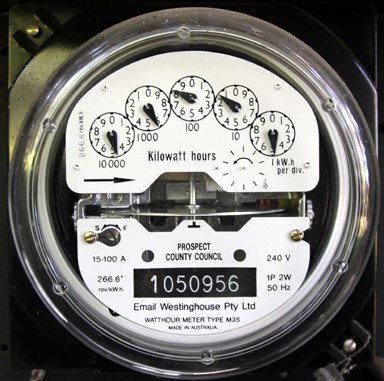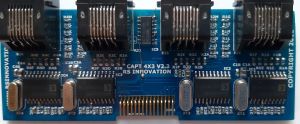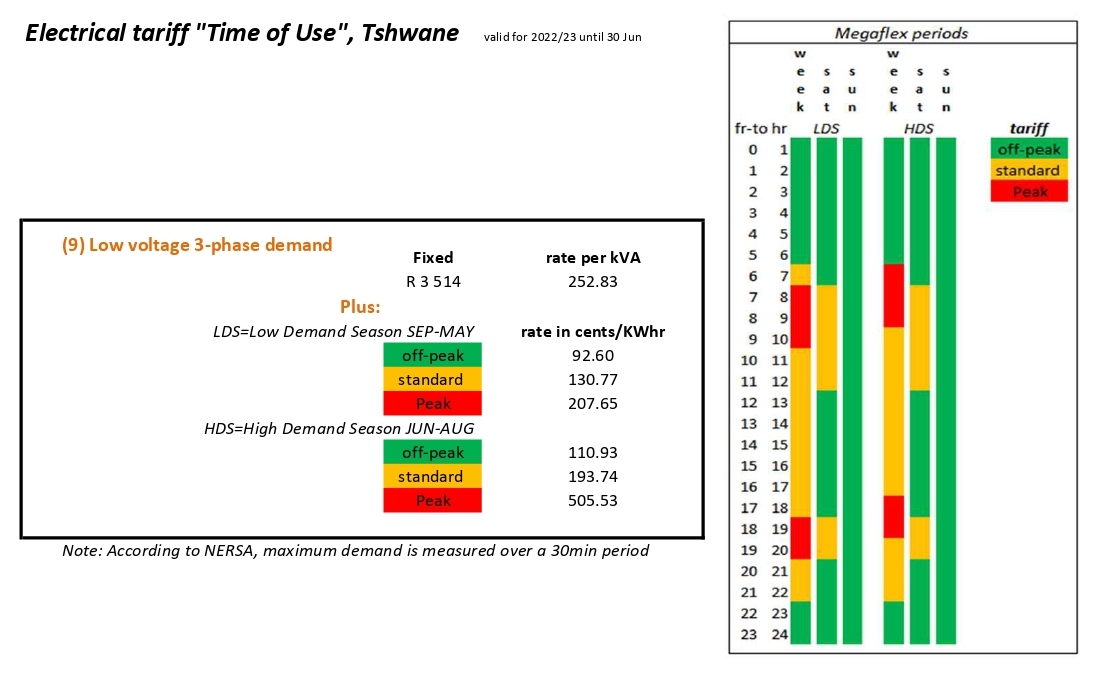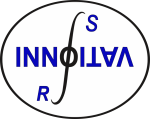
Smart kWhr Meter
 What does it mean 'a smart meter' ?
What does it mean 'a smart meter' ?
Conventional meters only record the active consumption. Smart meters are build around a microcontroller. They have (complex) software inside, referred to as firmware. Conventional meters were not able to record maximum demand or differentiate between active and reactive power.
Many electronic kWhr meters are actually no different than the old fashioned Westinghouse meter shown in the picture.
Our smart meter is capable of recording active power, reactive power and maximum demand for all units. The meter also keep track of 3 different time-of-use tariffs. In South Africa, these tariffs are stipulated by NERSA (National Energy Regulator of South Africa).
Industrial complexes with mini-factories usually have a body corporate who pre-pay for electricity. That meter is normally a smart meter, keeping track of the same billing information as our meter. The mini factories will often have simple 'non-smart' kWhr meters installed. The body corporate can thus only split the electricity bill pro-rata. If there are enterpreneurs in the comples who predominantly perform work in peak tariff time, or if they have heavy duty equipment which is expensive in maximum demand, the bill will be split unfairly.
Our smart meter will send an email to the body corporate with the EXACT consumption used by every factory or user. The meter is a sub-meter, which means it is used AFTER the municipality meter, to facilitate the splitting of electricity bills.
 Smart Metering PCB
Smart Metering PCB
The Printed Circuit Board on the left can measure 4 three-phaze units, or alternatively, 12 single phaze units. The smart meter unit can be configured with up to 4 of these PCB's, thus being able to monitor up to 16 three phase units, or 48 single phase units.
Current is measured with split-core current transformers which means supply cables do not have to be cut or removed during installation.
We stock current transformers of 80A to 600A.

NERSA tariff structure explained
For industrial applications, NERSA applies 3 different tariffs, off-Peak, Standard and Peak, depending on the time of the day, as shown in the table on the right. The tariffs shown in the attached table were only valid until June 2018.
From Monday to Friday, 3 tariffs are used. On Saturday, only 2 tarriffs apply and on Sunday only 1 tariff.
For 3 months of the year, the times of these tariffs shift by an hour.
From the table shown, it becomes clear why a Smart Meter is required.
Our Smart Meter is equipped with a GPRS unit, requiring an active SIM card and can either send an email at regular intervals with the consumption for each unit, or it can be connected to IOT (Internet of Things).
Even when the power is disconnected, the unit will remember all meter readings. It does so without the need for a battery.
© 2025 RS Innovation
